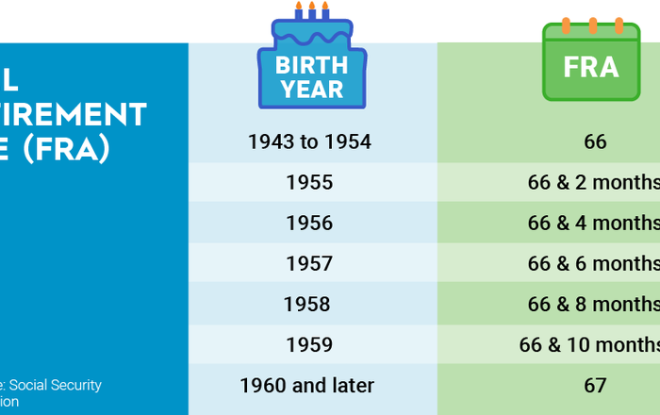Market Digest: MCK
Summary
Big Finish to the Third Quarter as Election Looms: Our Monthly Survey of the Economy, Interest Rates, and Stocks The stock market wrapped a strong third quarter in which the S&P 500 rose 5.5%. But the focus now shifts. The 2024 presidential election, which is less than 40 days away, has been far from static. Both parties chose their nominees long ago and the battle between Joe Biden and Donald Trump appeared to be set. Yet the months leading up to the election have been full of twists and surprises. Former President Trump was grazed by a bullet in the first of two assassination attempts, and following a disastrous debate performance, President Biden ceded the nomination to Vice President Kamala Harris with the backing of most of the Democratic Party. Notably, neither the Trump-Biden debate nor the Harris-Trump debate had much of a lasting impact on the polls, most of which remain locked within a margin-of-error difference. The two candidates are behaving like, well, candidates, seeking to outdo each other with promised tax cuts and breaks without explaining how they plan to pay for such largesse. The race likely will come down to a handful of in-play states. Depending on down-ticket Senate and House races, the winner may or may not have a mandate to enact his or her party’s agenda. The Fed has started cutting interest rates and may cut again in November; there will be additional and important nonfarm payrolls data and inflation reports; and the third-quarter 2024 earnings season will get underway with perhaps the strongest annual EPS growth in 10 quarters. Yet all of that will take a back seat amid the intensifying atmosphere leading into Election Day. The Economy, Interest Rates, and Earnings The broadest measure of the U.S. economy, Gross Domestic Product (GDP), appeared to show a healthy and accelerating economy as of mid-year. The final (third of three) report of second-quarter GDP mirrored the preliminary report, and appears to indicate a normally growing economy. The highlight of the quarter was the recovery in consumer spending from depressed first-quarter levels. Note that historical GDP data were recently revised for all quarters and years from the first quarter of 2019 through the first quarter of 2024. The final report of second-quarter GDP showed growth of 3.0%, nearly double the 1.6% growth rate (revised higher from 1.4%) reported for 1Q24. The revision between preliminary 2Q GDP and final 2Q GDP growth reflected upward revisions in private inventory investment and federal government spending, offset by downward revisions to non-residential fixed investment and exports. The increase in second-quarter 2024 GDP primarily reflected increases in personal consumption expenditures, private inventory investment, non-residential fixed investment, and total government spending. These gains were partly offset by a decline in residential fixed investment. Imports, which are a subtraction in the calculation of GDP, increased and exceeded exports. Personal consumption expenditures for 2Q24 increased 3.0%, up from 1.9% for 1Q24 and 2.5% for all of 2023. Spending on goods increased 3.0% in 2Q24, after falling 1.2% in 1Q24. Durable goods spending rebounded by a sharp 5.5% in 2Q24, after declining 1.8% in the prior quarter. Durable goods spending was up 3.9 % for all of 2023. Non-durable goods spending also bounced back, rising 1.7% for 2Q24 after declining 0.8% for 1Q24. The decline in annual inflation growth has been concentrated mainly in goods, while services inflation remains somewhat elevated. Consumers now appear more willing to buy goods at stable, or in some cases lower, prices. Consumer spending on services grew 2.7% in 2Q24, and was the one component of PCE that declined from the first quarter. Consumer spending on services grew 3.4% in 1Q24. Some of the growth in consumer services spending has been driven by rent equivalent and insurance, two costs consumers cannot control and many cannot avoid. Assuming the weak trend in 1Q24 consumer spending showed the consumer under siege from inflation, the bounce-back in second-quarter consumer spending suggests that consumers are adapting to structurally higher prices. We expect PCE within the GDP accounts to continue to send conflicting signals, with goods spending more volatile than services. Non-residential fixed investment, the proxy for corporate capital spending, rose at a 3.9% annual rate in 2Q24, after rising at a 4.5% annual rate in 1Q24 and at a 6.0% rate in 2023. For 2Q24, spending on equipment increased in high-single-digit percentages, while intellectual property and structures spending was little changed. PCE and non-residential fixed investment represent about four-fifths of gross domestic product in any quarter. In 2Q24, consumer spending added 1.90 percentage points to GDP, while non-residential fixed investment added 0.53 percentage points. Residential fixed investment, which surprised with 13.7% growth in 1Q24, dropped back into negative territory, declining 2.4% in 2Q24. The export-import balance heavily favored imports in 2Q24, as it did in 1Q24. Exports grew 1.0% in 2Q24, while imports were up 7.6%. Given the higher dollar value of imports, the net exports-imports balance subtracted nearly a percentage point (90 basis points) from overall 2Q24 GDP growth. We expect this category to remain volatile quarter over quarter. Another volatile element in GDP has been the change in private inventories. This category added 105 basis points (bps) to GDP in 2Q24, after subtracting 49 bps from 1Q24 GDP growth and 42 bps from 2023 growth. Disruptions in the distribution channel began with the trade and tariff wars of 2017-2020 and worsened with the supply-chain crisis in 2021-2022 and the supply-chain glut in 2023. As these effects begin to fade, the change in private inventories may shed the excessive volatility in this series that has prevailed since the pandemic. Sharply higher tariffs under a new administration, however, could be another potentially disruptive factor. Overall government spending was up 3.1% and added just over one-half percentage point to GDP growth. Federal spending was revised up to 3.3% growth in 2Q24 after declining 0.4% in 1Q24. State and local government spending grew 2.3%. The price index for gross domestic purchases increased 2.5% in 2Q24, compared with a revised increase of 3.1% in 1Q24. And the PCE price index advanced 2.5%, down from 3.4% in 1Q24. The core PCE index of 2.8% also came down from 3.7% for 1Q24. Higher GDP with lower price increases in 2Q24 marked a real improvement from 1Q24. Outside the generally strong GDP accounts, the economic picture is mixed. U.S. economic indicators generally suggest deceleration, although growth continues at a subdued level. The consumer economy continues to send mixed signals, with jobs and wages still growing — but at a meaningfully slower pace. The U.S. economy generated 142,000 new jobs in August, below the consensus call of 160,000. Reflecting soft July and June data, the trailing three-month nonfarm payrolls average is down to 116,000 as of this writing, well below the 12-month average of 202,000. While growth in new jobs continues to slow, multiple indicators of the employment economy — including the unemployment rate, wage growth, and the average work week — improved in August from July levels. The unemployment rate ticked down to 4.2% in August 2024 from a multi-year high of 4.3% in July; unemployment was 3.8% a year earlier in August 2023. Average hourly earnings increased 14 cents month to month for August and were 3.8% higher year over year, versus 3.6% for July. Annual wage growth continues to run above inflation, but the premium has narrowed. In August, the Bureau of Labor Statistics within the Department of Labor reported revised data showing 818,000 fewer nonfarm payroll jobs than initially reported for the trailing one-year period. From April 2023 through March 2024, the economy added about 2.1 million new jobs — 30% fewer than the initially reported 2.9 million. Most industries reported downward revisions, with notably lower levels in information services, professional & business services, and mining & logging. Transportation & warehousing was the only category to be revised higher, indicative of our increasing reliance on e-commerce. The consumer seems slightly more optimistic, or perhaps reconciled to higher prices. Retail sales for August edged up 0.1% month over month, after a 1.1% surge in July. On a year-over-year basis, retail sales were up 2.1% in August, compared with 2.9% annual growth reported for July 2024. Annual growth as of August 2024 was particularly strong for health and personal care items, non-store (online) retail, and gasoline & vehicle parts. Purchasing managers across the industrial economy remain cautious. ISM’s manufacturing PMI came in at 47.2% for August 2024, up from 46.8% for July 2024 though still in contraction territory (below 50) for the twenty-first time in the past 22 months. ISM’s services PMI was at 51.5% in August, up slightly from 51.4% in July. Services PMI slipped into contraction territory in June, but has since rebounded; this series has been in positive territory in seven of the eight months reported in 2024. The services economy is significantly larger than the manufacturing economy, and continued strength in this category is vital to ongoing economic growth. Industrial production in August rose 0.8%, rebounding from a 0.9% decline in July. Capacity utilization in August grew to 78.0% from 77.4% for July, but remains two percentage points below the long-run average. Straddling the commercial and consumer economies is housing. Consistent with the negative residential fixed investment data from 2Q24 GDP, the housing economy continues to struggle. Based on SAAR (seasonally adjusted annual rate), both new and existing home sales are running at less than two-thirds of peak pandemic levels. The Fed’s first interest-rate cut in four years, however, has started a process that finally may reignite the housing sector. Pent-up Millennial cohort demand for housing has coincided with Baby Boomers locked into too-large homes by a low mortgage rate. Rates on a 30-year fixed mortgage as of late-September 2024 were down nearly a full point from the 2024 peak in the 7.25% range. Still, rates remain high by historical standards. Following second-quarter strength, Argus’ Director of Economic Research Chris Graja, CFA, raised the Argus forecast for 2024 GDP growth to 1.9% from a prior 1.7%. Following second-quarter strength, Chris expects quarterly GDP to grow in the sub-2% range in the third and fourth quarters. We expect GDP growth in the 2% range in 2025, with the economy strengthening into the second half as lower rates stimulate consumer and business activity. Given the overhang of high prices and interest rates, and with the consumer weary from years of inflation, our GDP growth forecasts for 2024 and 2025 are likely to remain volatile. We also continue to believe the U.S. economy can avoid recession in 2024 and 2025, as it did in 2023 and 2022. The central bank started its rate-hiking campaign in March 2022. Sixteen months and more than five percentage points later, the Fed halted in July 2023; and it held rates steady for eight consecutive meetings. Finally, at its mid-September 2024 FOMC meeting, the Fed cut interest rates. Weariness with inflation has given way to worries about recession. At the beginning of the central-banking rate-hiking campaign, investors feared that the fed was ‘behind the curve’ in its fight against inflation. With inflation down to within less than a point of the Fed’s 2% target, that now seems like the last war. Investors again fear that the Fed is ‘behind the curve,’ this time in its need to cut rates before the U.S. tips into recession. The Fed famously has a dual mandate that seeks to maintain pricing (inflation) at a reasonable growth rate of 2%, while simultaneously promoting maximum employment. The balance of risks, investors had come to believe, had shifted away from inflation and toward concerns about the jobs economy. On Wednesday 9/18/24, the U.S. Federal Reserve Bank cut the fed funds rate by 50 basis points. The last time the Fed cut rates was more than four years again in 2020, amid the turbulence and extraordinary circumstances of global COVID-19 pandemic. Normally, the Fed cuts rates when growth is slowing and the economy is at risk of slipping into recession. This time, the Fed has started its rate-cutting cycle at a time when GDP is growing, companies are reporting solid earnings growth, the workforce is close to full employment, and annual wage growth is higher than annual inflation growth. The 9/18/24 post-meeting comment from the Fed sought to provide reassurance on the health of the economy, noting that recent indicators suggest economic activity has ‘continued to expand at a solid pace.’ But Fed officials acknowledge that job gains have slowed, and the unemployment rate has moved higher. The FOMC believes that risks to achieving its employment and inflation objectives are ‘roughly in balance.’ Given these factors, the FOMC decided to lower the target range for the fed funds rate by half a percentage point, to 4.75%-5.0%. Heading into the meeting, the futures market appeared to be anticipating a 50-bps cut. The consensus of economists and market strategists, on the other hand, indicated expectations for a 25-bps cut. The thinking of many economists was that a 50-bps cut would send the message that the patient (the U.S. economy) needed some serious medicine; and serious medicine is only administered when the patient is really sick. Yet the FOMC under Chairman Powell has shown itself unafraid of aggressive action when such action appeared to be needed. The Powell-led Fed in summer through fall 2022 hiked interest rates in 75-basis-point increments four straight times. The FOMC was uniform in its belief that 50 bps was the appropriate cut with 11 of the 12 FOMC members voting for the 50-bps cut. Reversals in Fed policy, and particularly the move from raising rates to cutting rates, often come at a fraught time for the economy. In those periods, the economy is seen as vulnerable to too little stimulus, while inflation is at risk of returning from too much stimulus. In our view, Mr. Powell has maintained a calm manner in addressing the dual mandate, a necessary tone in the shift from restrictive to accommodative monetary policy. The Fed’s preferred inflation gauge, the core PCE price index, rose 0.1% in August and was up 2.7% year over year. The monthly increase was the lowest since early 2021. The annual change was up 0.1% from the July reading, which had been the lowest annual rate of change the core PCE price index since March 2021. The core PCE data confirmed inflation inputs from the August CPI report issued in mid-September. The all-items CPI rose 0.2% month over month in August, flat with July. On an annual basis, the August all-items CPI was up 2.5%, sharply down from 2.9% in July and 3.0% in June. Core CPI was up 0.3%, and the annual change in core CPI was 3.2%, level with July. Goods inflation has come off markedly, while inflation in services is still stubbornly high. The index for shelter rose 0.5% month over month in August and was the ‘main factor’ in the increase in all-items CPI, according to the Bureau of Labor Statistics. Late in March 2022, the two-year U.S. Treasury note yield first moved above the yield on the 10-year Treasury. The twos-10s spread remained inverted though July 2024. Now, the yield curve is normally sloped for the first time in two and a half years. The 10-year Treasury yield was 3.75% as of the end of September, compared with 3.91% as of the end of August; the cycle peak for the 10-year yield was at the 4.9% level in October 2023. The two-year Treasury yield was 3.55% as of the end of September, down from 3.91% as of the end of August and the peak level of 5.2% as of October 2023. Argus expects short-term yields to move lower from current levels; long yields may not move higher, but they are expected to widen their relative premium to short yields. While we have likely seen the end to twos-10s inversion in this cycle, two- and 10-year yields could remain in proximity in the near term. Argus Fixed Income Strategist Kevin Heal is modeling two additional quarter-point rate cuts in 2024, one at the November and one at the December FOMC meetings. Note that the November FOMC meeting occurs post-election. These cuts, if enacted, would bring the Fed’s central tendency to the 4.25%-4.50% level by year-end. On a preliminary basis, Argus’ fixed-income strategy anticipates three additional quarter-point cuts in 2025, bringing the central tendency to 3.50%-3.75% by December 2025. The Fed is expected shape its accommodative policy, according to Kevin, based on the state of the economy in 2025. First-quarter 2024 earnings outpaced expectations, but were below the double-digit growth that prevailed during the pandemic and immediate post-pandemic era. Second-quarter 2024 earnings from continuing operations are up by high-single-digit to low-double-digit percentages, according to our vendor survey. Along with GDP growth, second-quarter earnings represent a bulwark against growing recession concerns. After S&P 500 companies reported results, second-quarter 2024 earnings from continuing operations were up 11.5% compared with 2Q23 EPS, according to FactSet, and up 12.9% according to Refinitiv. According to Bloomberg, 2Q24 earnings are up 12.5% on a share-weighted basis and 16.5% on a market-cap-weighted basis. This premium of market-cap-weighted to share-weighted EPS growth is reflective of the earnings outperformance of large-capitalization companies compared with small- and mid-caps. An unusually high percentage of companies (more than 25%) reported negative earnings for 2Q24. The average EPS decline for the negative-earnings group, which is heavily weighted in Energy, Materials, and Real Estate, is 16%. For the 75% of companies reporting positive EPS, average earnings growth is a robust 22%. A key reason investors are optimistic about second-half 2024 earnings growth is that the negative drag from Energy, Materials, and Real Estate is expected to diminish in 3Q24 and potentially reverse in 4Q24. At the sector level, the strongest earnings growth came from Financial, Information Technology, and Utilities — all up in high-teen to low-twenties percentages year over year. Other sectors reporting positive EPS growth include Communication Services, Healthcare, Consumer Discretionary, Consumer Staples, and Industrial, in descending order. As noted, Energy, Materials, and Real Estate were all down; Materials was off in high single digits, while Energy and Real Estate earnings were down 20%-21% from a year earlier. According to Argus President John Eade, our stock-bond barometer is near equilibrium. A key risk to valuations would be earnings growth failing to meet the market’s targets and/or inflation or interest rates ticking higher. Either of those factors would result in elevated valuations, but represent modest risks. Domestic and Global Markets At times during the third quarter, the strong stock-market gains compiled in the first half of 2024 appeared at risk of dissipating. Both July and August had strong sell-offs but rallied to post wins. Since 1980, September has been the worst month for the S&P 500, with an average decline of over 1%; the number-two worst month, August, has averaged a fractional decline since 1980. September 2024 started with steep selloffs, yet ended with a 2.0% gain on the S&P 500 to cap a 5.5% gain for the full quarter. For the first quarter of 2024, the S&P 500 was led by the growth stocks. That changed in 2Q24 as sector rotation away from growth leadership got underway. The third quarter featured significant rotation away from growth sectors and toward areas with cyclical or defensive characteristics. These trends also are playing out at the individual index level. At the nine-month 2024 mark, the S&P 500 had delivered total return (with dividend) of 22.1%. The Nasdaq was close behind, up 21.8% on a total-return basis. In almost any year in which the overall stock market is up in solid double digits at the three-quarters mark, the Nasdaq typically has built a significant performance lead over the broad S&P 500. We believe the similarity in S&P 500 and Nasdaq performance in 2024 to date reflects heavy investor concentration in the so-called Magnificent 7 stocks, which lead both indices. Wilshire Large Cap Growth expanded its premium to Wilshire Large Cap Value to about 12 percentage points at quarter-end, from nine percentage points at the end of August. In the first half, this premium was in double-digit percentage points. With investors taking profits in t
Upgrade to begin using premium research reports and get so much more.
Exclusive reports, detailed company profiles, and best-in-class trade insights to take your portfolio to the next level





Leave a Reply